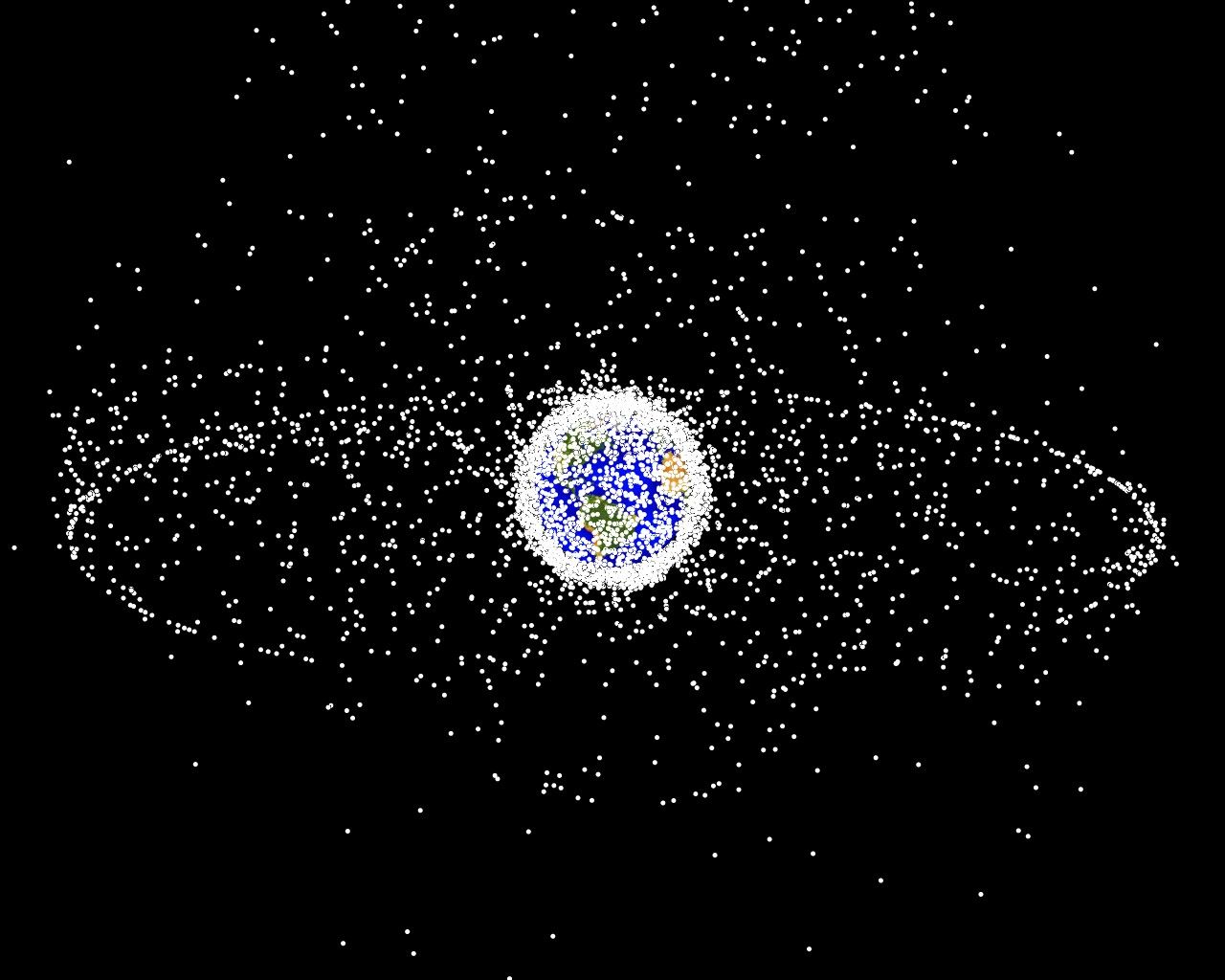Space is getting congested and contested day by day. The immediate environment of the Earth has evolved into a vast dumpsite for debris of all types, from abandoned spacecraft and rocket stages to bolts and tools misplaced by astronauts.
This waste is primarily concentrated in two areas around our planet: low Earth orbit, between 200 and 2000 kilometers above the surface, and geosynchronous Earth orbit, which is 36,000 kilometers away.
This waste may have been released during missions or resulted from breakups brought on by explosions and collisions.
Quantum Of Debris
There are currently 36,000 objects larger than 10 centimeters (including only a small number of still operational satellites), 1 million objects between 1 and 10 centimeters, and 130 million objects smaller than 1 centimeter. This accumulated trash has grown to alarming proportions.
Nearly 3,000 retired spacecraft are whizzing around the planet at incredible speeds, along with other large, hazardous debris like upper-stage rocket bodies.
For instance, the ISS travels at an altitude of 250 miles (400 km) and has an orbital velocity of about 17,100 mph (27,500 kph).
Even a tiny piece of debris traveling at such speeds can cause serious harm to a spacecraft, and countless errant bullets constantly bombard our planet.
Kessler Syndrome
The Kessler Syndrome is a phenomenon in which the amount of junk in orbit around Earth reaches a point where it just creates more and more space debris, causing significant problems for satellites, astronauts, and mission planners.
It describes and warns of a cascade of orbital debris that could potentially hinder humanity’s space ambitions and activities.

In 2019, the Space Safety Coalition (SSC) laid out a set of proposed voluntary guidelines designed to keep the Kessler Syndrome and space junk at bay over the coming years. One recommendation is that all satellites operating above 250 miles (400 km) be equipped with propulsion systems to maneuver away from possible collisions.
The zone below an altitude of 250 miles (400 kilometers) could be designated an experimental region to keep space accessible and affordable for various people.
Reduce Avoidance Maneuvers
In cooperation with the LIP computer science laboratory, the Laboratory for Analysis and Architecture of Systems (LAAS-CNRS) teams have developed a fast and accurate algorithm to calculate collision risks.
The French Space Agency (CNES), which created the algorithm in 2016, is now using it to evaluate the risks to its satellites, and it has proven to be very successful.
Modeling Uncertain Trajectories
However, how precisely can an impact risk be assessed? The solution is to consult a list, primarily created by the US space surveillance network, which pinpoints the location of the largest, most dangerous debris, defined as anything larger than 10 cm.
Assessing the likelihood of a collision enables us to project their orbits and predict their future positions.
According to Denis Arzelier of the LAAS, co-author of the algorithm, “the trajectories of objects as well as of satellites cannot be known a long time in advance accurately due to measurement errors by ground-based radars and telescopes, and also because it is difficult to properly model all the disturbances that affect the space environment, such as atmospheric friction in low Earth orbits.”
In other words, the path of a space object can be conceptualized as being contained within a tube that enlarges with increasing uncertainty. Therefore, estimating the likelihood of a collision requires figuring out whether the two tubes will likely cross each other’s path at a specific moment.
Mioara Joldes, a co-author of the study and a member of the LAAS, explains that mathematically, this probability is defined as a two-dimensional integral of a Gaussian distribution (the well-known bell curve representing a set of random data) on a disc.
The space industry has accepted this definition, and a 1 in 10,000 cutoff point has been set for the probability of an avoidance maneuver becoming necessary.
The Challenge Of Satellite Constellations
Given the recent, unprecedented increase in launches, particularly into low Earth orbit, where congestion has become a problem, this issue is of the utmost importance.
And the situation will only get worse as the private sector continues to build out mega-constellations like the Starlink and OneWeb projects, which will eventually consist of thousands of closely spaced satellites to guarantee global broadband internet coverage.
However, this will result in a greater chance of collision with debris, which will require more frequent analysis. Therefore, risk assessment processes will need to be expedited. Therefore, there is a need for autonomous satellites and custom algorithms like those created by the French Researchers.
Indian Space Outlook
United States Space Command’s (USSPACECOM) tracking and inventory show India’s space assets are orbiting the Earth with 111 payloads and 105 space debris objects.
To prevent collision threats from other space objects in 2022, the Indian Space Research Organization (ISRO) performed 21 collision avoidance maneuvers for Indian Operational Space assets.
The ISRO System for Safe and Sustainable Operations Management (IS4OM) has been developed to support more concentrated efforts to monitor the objects that pose a collision risk continuously, improve the prediction of the evolution of the environment for space debris, and coordinate activities to reduce the risk that space debris poses.
- Group Captain Arvind Pandey(Retd) is a geospatial intelligence professional. He is trained in the full spectrum of imagery analysis in aerial and space-borne sensors and has vast experience creating geospatial infrastructure.
- Reach out to the author at arvind.pandey65 (at) outlook.com
- Follow EurAsian Times on Google News




